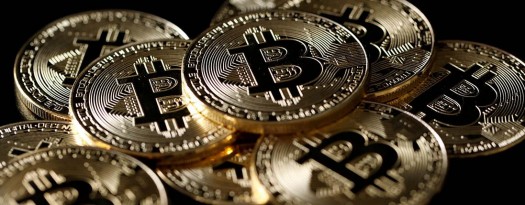GameFi. GameFi is called one of the crypto trends of 2022. Blockchain games have revived the gaming industry and have made it possible to turn a hobby into a stable income. The play-to-earn concept has found millions of fans around the world. Many blockchain developers have noticed GameFi because this area is now in trend and therefore the startup founders find investors easily. GameFi is considered by some the future of the gaming industry. Oleg Petryashyov, Founder of Technocrat company, delineated the popularity phenomenon in an interview. The current problems and prospects that the development of GameFi opened up for users were also covered.
- What is the GameFi phenomenon in the first place? What common ground can there be between the gaming industry and cryptocurrencies?
- The gaming industry as a separate serious sector of the economy has existed for a long time. Self-contained in-game economies were almost fully formed in the 2000s, and this is a very important milestone in the development of video games. Already then, for example, in Lineage or World of Warcraft, and much earlier in browser games, there were their own internal markets. It was possible to resell items, upgrade characters and sell them, create your own guilds and take a commission from all players for managing this guild, create unique gear, and so on. All this would continue to flourish without cryptocurrencies. But, in my opinion, cryptocurrencies for the gaming industry have a very decisive, key impact.
The thing is that the chain of selling and buying game items or characters for real money is quite complicated. You need to negotiate with someone, enter the marketplace, then sell through this marketplace, transfer money somewhere, send money to your card, and so on. It is quite difficult for a wide audience to enter this market, unless, of course, you are a Digital Native teenager who grew up in this environment and is well versed in it. And imagine that money falls out of the monster you killed, and, as soon as you pick it up, it is instantly credited directly to your bank card. This function is just ideally implemented through the mechanism of decentralized finance. The platform and infrastructure for a certain system token—in this case, the game's in-game token—to be turned into other currencies and coins with no borders already exists.
- The ability to make money on games is not new. Esports has been flourishing for years, and good players can make a lot of money from their hobby. In addition, no one excludes earnings on streams and other ways to generate additional income. What is so unique about this “play and earn” concept?
The thing is that the gaming world is where the sports persons thrive—the rare, exceptional players who make up less than 0.1% of everyone involved. This is the key principle of income in sports: millions of people are engaged in it, and only 10 of them become professionals who earn something. The uniqueness of GameFi games lies precisely in that they will be available to a much larger audience. Any person is supposed to be able to play and receive some income without becoming a professional.
The main income in eSports comes from advertising: there are sponsors who form tournaments where the best players receive money and, in turn, attract an audience to the tournament and the game. Another option for professional gamers is streaming and monetization through donations and ad revenue. The play-to-earn concept implies completely different in-game mechanics, creating your own in-game economy—and this is a completely different earning opportunity for users.
- GameFi is called one of the crypto trends of 2022. What is the secret to the wild popularity of blockchain games?
Games are one of the best ways to gain industry recognition and new users quickly. So far, nothing better than GameFi has come up for introducing ordinary people to cryptocurrency technology. That is why major players in the cryptocurrency market are extremely interested in the development of the GameFi industry. For example, last week Binance, the largest cryptocurrency exchange, invested another $500 million in a fund dedicated to Web3, including the development of the GameFi industry.
- The hype on play-to-earn games is said to be linked to the coronavirus pandemic. What do you think about this?
From my point of view, covid and GameFi are only indirectly related. The pandemic has accelerated digitalization, the possibility of remote work has appeared, and delivery services and online presentations have been thriving. Now there is everything so that a user can comfortably spend a significant amount of time online, while being anywhere in the world. In parallel with this, interest in all types of digital entertainment has been growing. This is evidenced not only by the financial statements of online cinemas but also by the crazy demand for video cards not only from miners. People bought computers and began to work and relax at home more often, and, as a result, spend more time playing various games. This is a general trend that has also affected the GameFi industry, but I would not draw a clear relationship between the pandemic and GameFi.
- There is an opinion that the GameFi sphere can solve the global problem of poverty and unemployment in the countries of South and Southeast Asia, because play-to-earn games are mainly aimed at young people who find it difficult to find jobs. Now they can provide for themselves just by playing. Is it really possible to earn so much on this, or are talks about real earnings a little exaggerated?
To my mind, GameFi in the next few years can significantly affect the social structure of society. According to the Russian Statistics Agency, in 2021, 11% of Russians were below the poverty line. Recently, the World Bank warned of an increase in the level of poverty around the world. Imagine if so many people had an economically sustainable product that would allow them to earn in their region, spending much less effort than working in the field. Such a product will become a powerful driver for the development of this market.
Take the incredible popularity of the game Axie Infinity in the Philippines. It is this country that accounts for over 35% of traffic and the largest share of active users per day, and some of them have earned income through the game, equivalent to a salary at a usual job. And these are actual cases that are easy to believe in: last year, Axie Infinity allowed you to increase capital for an invested coin by 100–150 times.
Cases of phenomenal earnings on play-to-earn games are now really not uncommon. However, it must be remembered that these are investment games that require the user to make initial investments. And the more you want to earn, the more actively you have to invest. At the same time, all games of this kind are in the zone of extremely risky investment, and the games themselves now have the characteristics of a Ponzi pyramid and are highly dependent on the influx of new users. For example, if you had invested $100 in the currently popular StepN game in March, you would have about $8 left of them now. That is, your investment would be reduced by 12 times.
For play-to-earn games to become a stable source of income, it is necessary to normalize the situation in their tokenomics and build a clear, sustainable business model. We can cite as an example e-sportsmen who receive money for generating attention to themselves and attract advertisers. The advertising business model is familiar, but the way to create an economy on play-to-earn games is not yet very clear. Now there are about a dozen major games that are close to this stage, but there is still a long way to form a stable market around them.
- Despite the popularity of blockchain games, many people mention a rather high entry threshold. The initial contributions are quite large, if we talk about teenagers and people who decide to play games to earn money, not spend money. Does such a problem really exist?
Such a problem really exists. So far, all these games are not so much play-to-earn as pay-to-earn. They have an investment format to which the game is “attached”. Now this is just an additional function that forms the mechanics of capital circulation, and not the key tool for generating value and income.
- They speak a lot of talk right about the integration of GameFi and the metaverse. Can this be considered a new round of evolution in the gaming industry?
The movement of mankind towards the metaverses will most likely occur due to very practical things, such as the creation of new ways and places to earn money. As for the gaming industry, the ability to instantly get real money for virtual achievements and victories, based on the cryptocurrency infrastructure, fits the concept of the metaverse. As soon as this mechanic is implemented, it is quite obvious that the mechanism of stimulus and feedback will get connected in the closed circuit in the human brain: the time and effort spent will immediately pay off with rewards, and the reality of the game world will become more tangible for the participants.
- Speaking from the user's point of view, what projects are worth paying attention to now?
Of particular interest now are cryptocurrency games whose the mechanics are similar to that of Minecraft. Their major feature is the active involvement of users in the development of the game and its environment. Such GameFi projects as The Sandbox and Decentraland are examples of this. In them, creator players can create their own ecosystem and attract users, creating a network effect: the more participants, the more fun it is to play, and accordingly, the value of the game grows. It is harder to get involved in such projects than in simpler and more famous games, but if the player is carried away, his interest will not fade for a long time. The potential of such games is inexhaustible, like the very need of people for creativity. In addition, these platforms have a reward system for creators: the more users play on the created “land”, the more its owner earns. Thus, developers get the opportunity to constantly develop their project on the creativity of enthusiasts and attract new users not only by the opportunity to earn money, but also by the quality of the game itself. Another feature is the restrictions set by the cryptocurrency platform itself, which prevent the game from turning into an economic bubble that will one day burst. The expansion of "lands" has a limit, and they cannot grow infinitely. This mechanic supports the deflationary trend and works exactly like burning tokens. The prospects of these projects were appreciated not only by the players, but also by large international companies—Nike, Adidas, Coca-Cola, Samsung and many others—which joined Decentraland and The Sandbox last year.
- Despite the hype around GameFi, there are a number of problems. Monotonous gameplay and low engagement make interest in new games quickly wane, and after the hype comes oblivion. Does this mean that play-to-earn games are only good for making money on speculation while the project is still on the buzz?
It is very important to understand and take into account that currently existing play-to-earn games, such as Axie Infinity and StepN, have features of pyramidal structures. This means that the economics of the project and payments to participants are highly dependent on the dynamics of the influx of users. Decelerating growth of the number of new players, as a rule, has a negative impact on the income of the project participants. There is a high probability that the economy of the game will not work out and it will collapse.
The GameFi industry is now in its infancy, and all these high-profile projects can be called pilots. And its further development will be built on the ruins of hundreds of such projects. This is a completely obvious process, but it is not going to happen in a year: it will take time for strong and stable leaders of the GameFi industry to mature. People who are savvy and advanced in GameFi can jump from project to project, playing what takes off, and then switch to others.
- It is logical to assume that in the GameFi industry you can earn money not only by playing. What prospects are there for various kinds of specialists?
GameFi has several additional earning options: creating guilds, organizing investment pools, as well as buying and reselling game assets. In addition, there is also the possibility of investing directly in players, providing them with a loan or in-game inventory. If a promising and successful gamer participates in the project, who for some reason does not have enough funds to continue the game, he can receive a loan from guild members or a grant from developers. Such investments help ensure the supply of liquidity for successful players. Another option is for users to create games within games. As an example of implementation, again, we can name the projects The Sandbox and Decentraland.
- How profitable, for example, is it to simply buy and resell tokens of various projects? Can GameFi tokens be considered an investment tool?
Investing in game assets, including currency and other in-game resources, can be very profitable, and you don’t have to play. If you invest in the project currency and it grows, then you will earn on the rate. It all depends on how much time you will devote to the project and how important the goal of the game is for you, not just making money on it. But you will have to monitor the dynamics of the project and the exchange rate of the corresponding currency, anyway.
- In conclusion, I would like to talk about the prospects for the development of the industry. Where is the GameFi industry heading? Will everything be limited only to games and shouldn't anything more inclusive be expected?
The GameFi industry will definitely evolve, but the big change will come when big publishers come into the play-to-earn market with really high-quality games. Then there will be projects with an established economy, in which it will be possible to develop more than for one or two years. So far, none of the pioneers of the gaming industry—Activision, 2K, Rockstar Games, Blizzard Entertainment—have come to GameFi.
Another engine of the industry will be the new generation that has grown up with computers since childhood. For them, games are an integral part of life. As members of this generation become more economically active, they will bring more and more capital into the gaming industry.
Thus, GameFi is a very interesting and promising topic you can and should dive into, as a player, developer, investor. Everyone can choose for themselves a suitable point of application of efforts. Yet you need to be prepared for all the peculiarities of the early phase of the industry—extreme volatility in project coin rates, an abundance of fraudulent schemes, and difficulties in determining the value of ideas.









